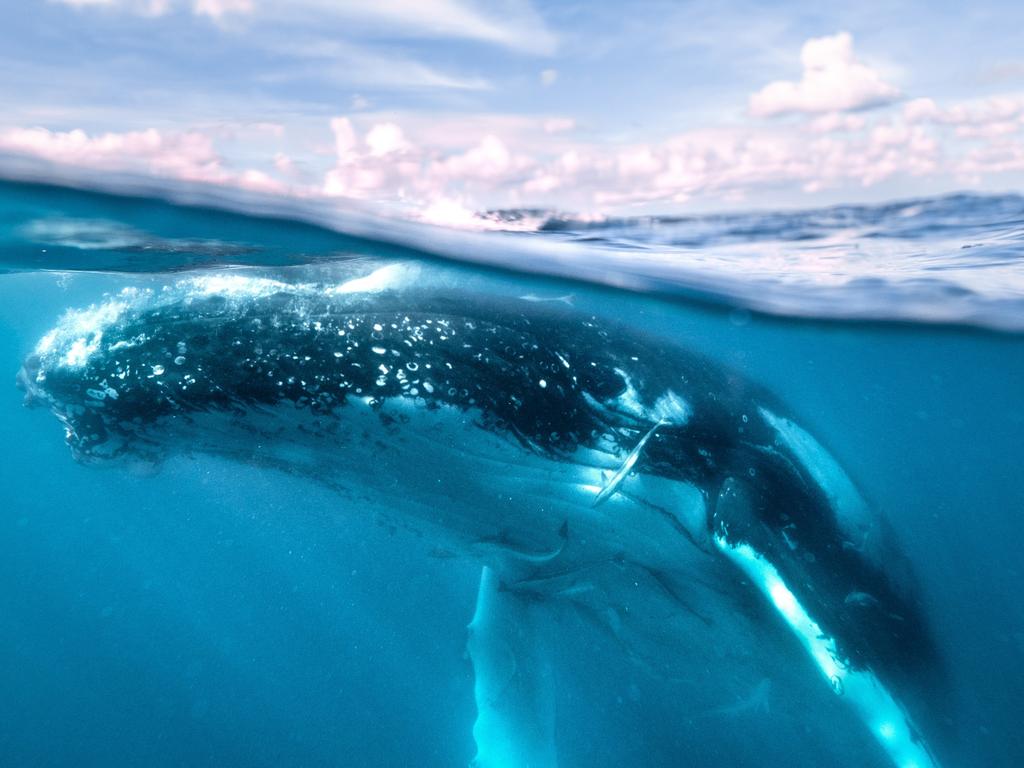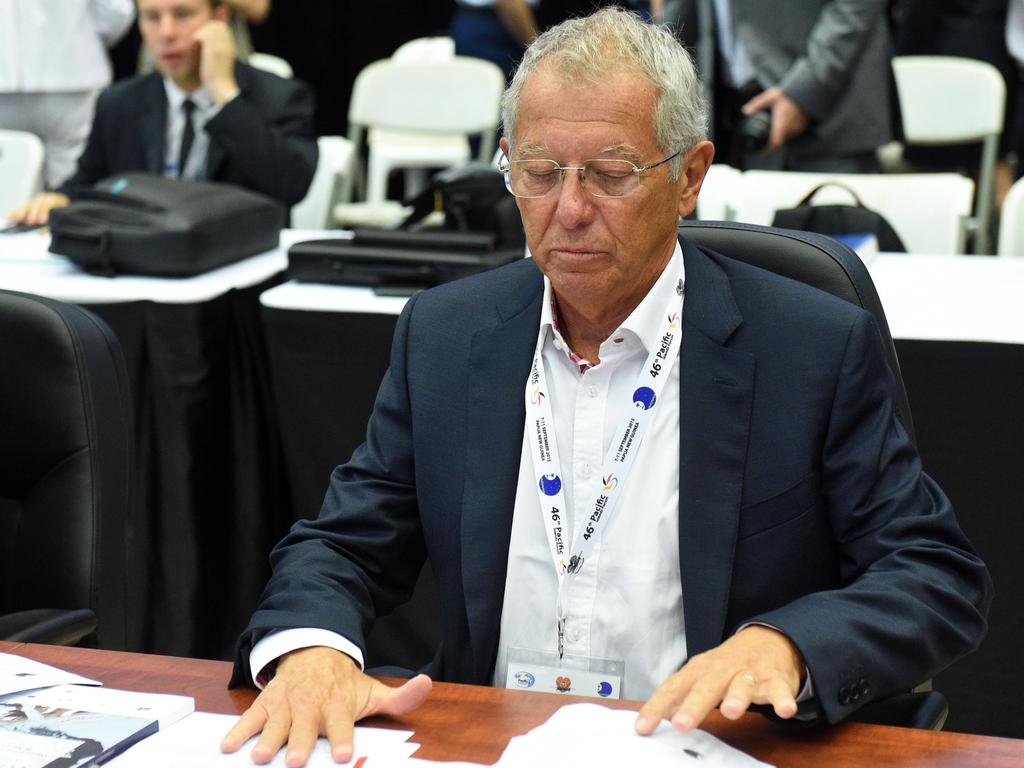Australian entrepreneur Mark Carnegie’s $1m offer to island nations to build carbon sinkhole
Island nations under threat from rising sea levels have been offered more than $1 million to take part in a bold new experiment.
Island nations under threat from rising sea levels have been offered more than a million dollars to take part in a bold new experiment to explode the global whale population and turn the ocean into a giant carbon sinkhole.
The proposal, put forward by Australian entrepreneur Mark Carnegie and British climate guru Sir David King, would see the ocean “fertilised” in a way that stimulates the growth of phytoplankton, tiny creatures which absorb carbon and produce oxygen.
This in turn would lead to more fish and ultimately more whales, thus kickstarting a self-sustaining cycle that would dramatically increase the carbon capture capacity of the sea.

“By this announcement we invite vulnerable island nations whose livelihood is threatened both by reduced fish catch and by rising sea levels to apply to us to be part of the early development of a new program for Marine Biomass Regeneration,” the pair stated in an article obtained by News Corp Australia.
“The successful island-nation applicant will receive over a million dollars’ worth of direct support.”
A 2019 report by the International Monetary Fund valued the carbon capture potential of whales at more than US$1 trillion. An article on the IMF report published by the UN Environment Program notes that each great whale absorbs around 33 tonnes of CO2 and takes it to the bottom of the ocean with them when they die. A tree absorbs only three per cent as much.
The whales’ defecation – which is rich in iron and nitrogen – also massively stimulates the growth of phytoplankton, which capture 37 billion tonnes of carbon dioxide – four times that of the Amazon rainforest – and produce half the world’s oxygen.

Last month an article in the science journal Nature found that iron in ash from the Australian Black Summer bushfires had sparked a massive phytoplankton bloom in the Southern Ocean, which researchers suggested may even have absorbed almost the same amount of carbon dioxide that the fires emitted – although not for the long term.
Carnegie and Sir David – the UK government’s former Special Representative for Climate Change – said their proposal would tackle the twin problems of climate change and biodiversity.
“This is a significant ocean-based initiative – or Carbon Blue initiative as such interventions have become known – which we are calling Marine Biomass Regeneration,” they said.
“Similar in aim to the restoration of forests on land, with the biodiversity they support and secure, MBR will give a stake to those island nations in whose waters early efforts are made.
“Ultimately this approach will empower those islanders in multiple ways: they will experience almost immediate growth in fish-stocks and biodiversity within their territorial waters, well within fishing reach of their traditional industries; they will acquire expertise in the methods required to deepen and extend these rich new fisheries; they will assist in mitigation of global climate change and enhancement of biodiversity, from which all nations will ultimately benefit.”

Astonishingly, the pair believe they can restore whale populations to where they were more than three centuries ago, an increase of 100 times the current level.
“By imitating natural processes, the study will initially raise fish and mammal populations in the region by providing missing fertile material at the ocean surface. Such ‘fertile material’ was, until about three centuries ago, provided by large communities of whales.
“Largely feeding towards the deep ocean floor, whale pods come to the surface to defecate – and that fertile material sets up a whole new food chain and cycle of life. First a green phytoplankton layer is created, which is the foodstuff for fish larvae; small fish attract larger fish and, in turn, the mammals of the sea – including whales.
“Supported at scale over some years, we expect that the whale and fish populations will be returned to where they were before humans began catching whales for blubber more than 300 years ago, perhaps a hundred times more than the current level.”
More Coverage
Read related topics:Mission Zero





